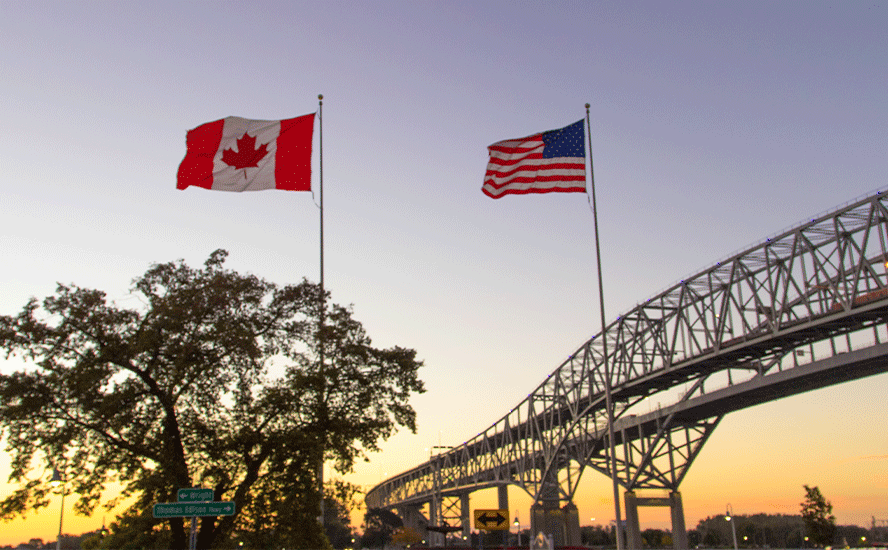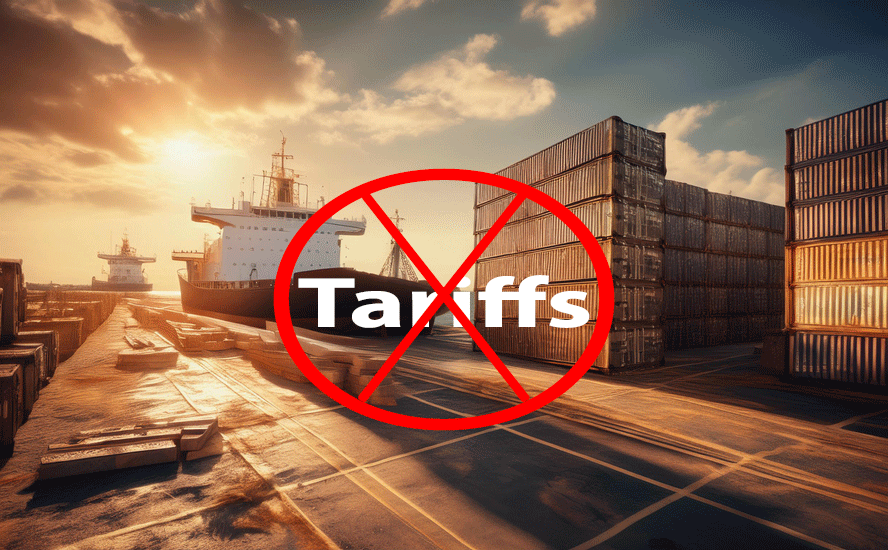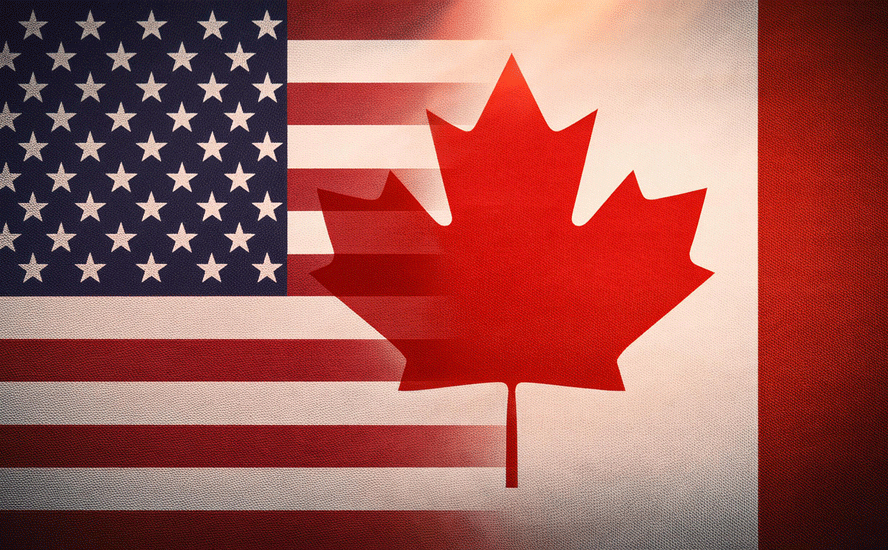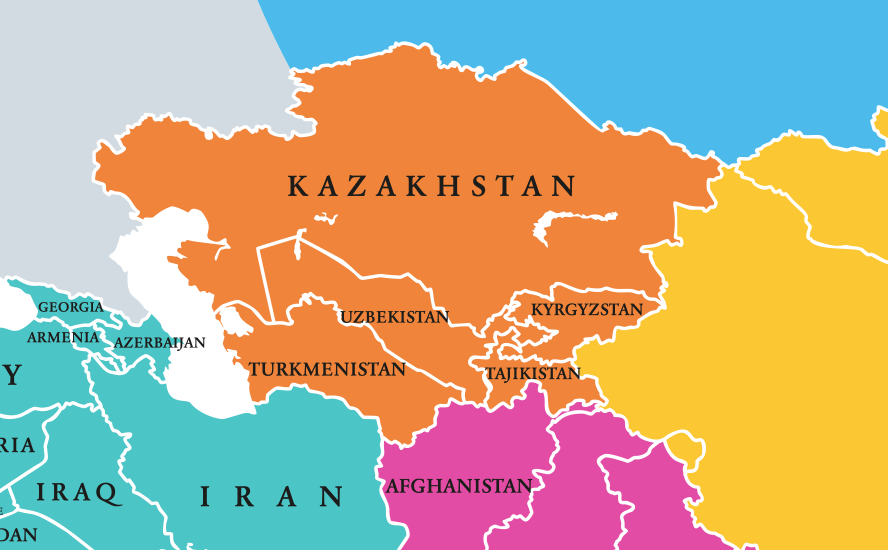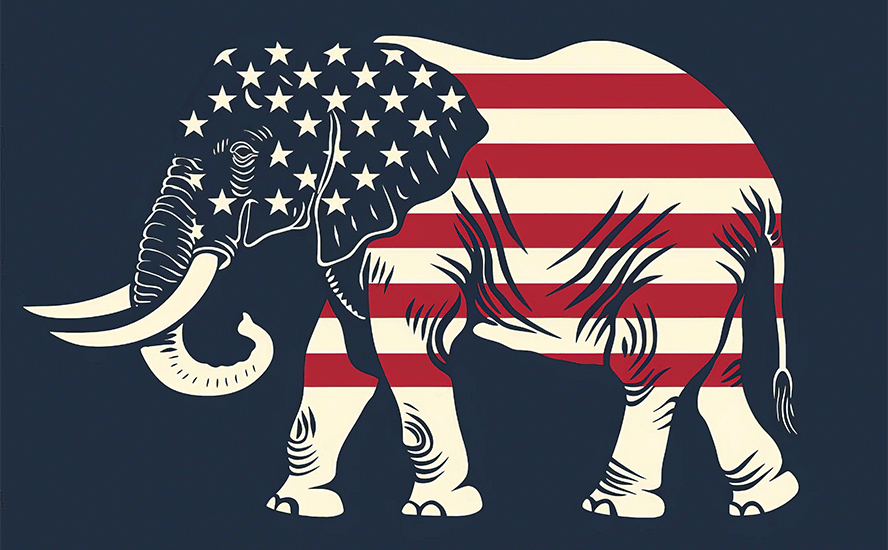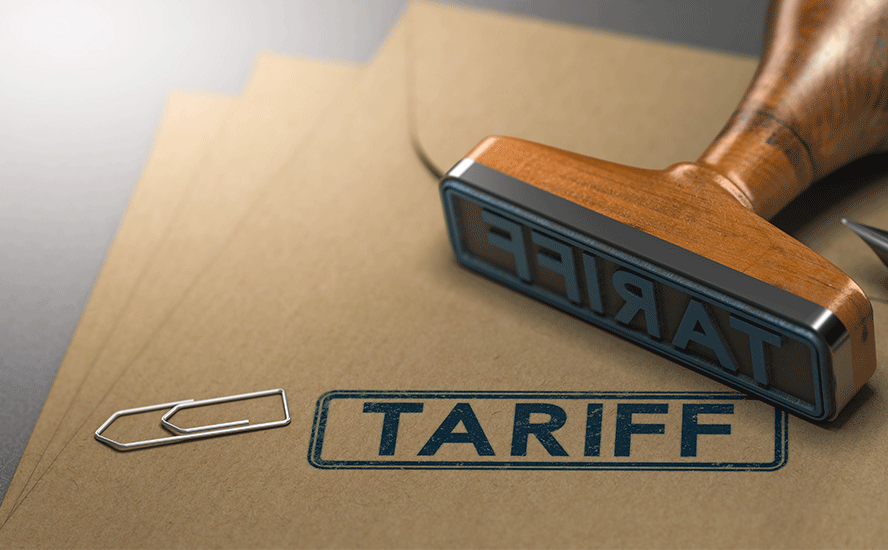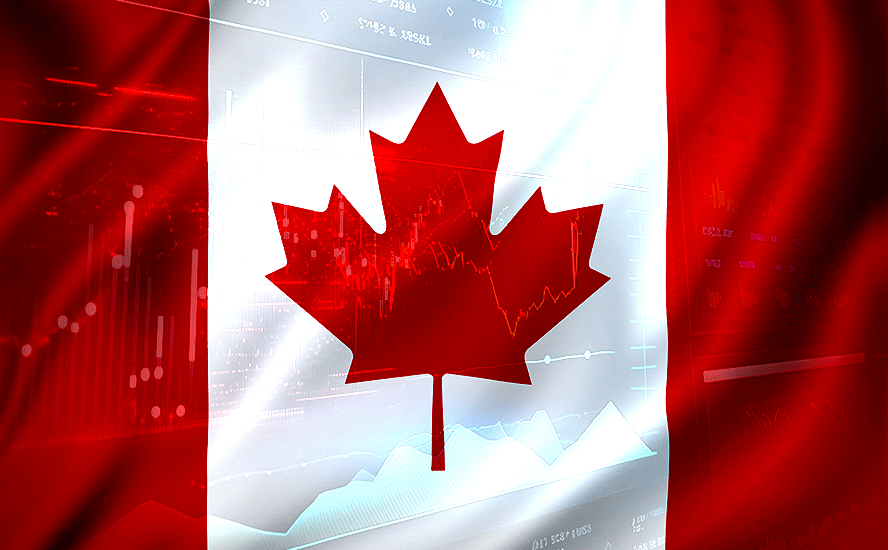Is political partisanship killing America?

2019.05.01
Donald Trump’s decision to recognize Israel’s 1981 annexation of the Golan Heights was reportedly made “after getting a quick history lesson during a conversation on a different subject,” states a news story that has been making the social media rounds lately. It showed up on my Facebook feed.
Curious, I clicked on the link. The Reuters article went on to explain how ‘The Donald’ made the snap decision at the Republican Jewish Coalition in Las Vegas. The referenced conversation was between himself, US Ambassador to Israel David Friedman, and his son-in-law Jared Kushner. Both men are Jewish. No bias there.
“I said, ‘Fellows, do me a favor. Give me a little history, quick. Want to go fast. I got a lot of things I’m working on: China, North Korea. Give me a quickie.” Trump recounted to the amiable crowd.
Was the history lesson objective, giving a fair account of both sides of the Arab-Israeli conflict, leading the listener – Trump – to draw his own conclusion? Not a chance.

The importance of Israel occupying the Golan Heights and East Jerusalem following the young Jewish state’s victory in the 1967 Arab-Israeli War cannot be underestimated. It formed the foundation of the conflict that was to rage in the region for the next 50-odd years, as reflected in this comprehensive account of the Six-Day War, told by the BBC:
Israel and the Palestinians felt the biggest consequences of the 1967 war. Israel began an occupation of the Palestinian territories that continues half a century later. It annexed East Jerusalem and the Golan Heights, in moves not recognised internationally.
A 25-year-old Israeli soldier back from the war told his comrades: “We’ve lost something terribly precious. We’ve lost our little country.”
All the issues that are now depressingly familiar to anyone who follows the news – violence, occupation, settlements, the future of Jerusalem – took their current form as a result of the war. The shape of the occupation emerged very quickly. Predictions of the dangers that lay ahead were ignored.
Doubtless this was all lost on Trump, who officially signed a proclamation granting US recognition of the Golan as Israeli territory – an about-turn from decades of US Israel policy – during a visit from Israeli Prime Minister Benjamin Netanyahu. The move was seen as an attempt to help Netanyahu re-elected, which he did this week.
In February Donald Trump made an equally hasty decision to pull American troops out of Syria. This decision was made on the assumption that other nations would take up the slack in carrying on the US mission to fight ISIS, after US troops leave. They unanimously declined.
“That’s the dumbest f-ing idea I’ve ever heard,” Senator Lindsey Graham apparently told Acting Secretary of Defense Patrick Shanahan, regarding the decision to withdraw. “It’s hard to imagine that any president would wake up and make this kind of decision with this little communication,” Republican Senator Bob Corker chimed in.
These are just two examples of Trump’s preference for unilateral decision-making, where foreign policy is carried out on the run, with little to no consultation with other nations or domestic allies.
Of course no-one should be surprised. Americans, or some of them, elected Trump in 2016 to get away from the old politics as usual under Obama, to drain the swamp of Washington cronies. Three years later, it certainly isn’t politics as usual under Trump, but something altogether different. More like a government run by a mafia don who will lie to, cheat and bully anyone who gets in his way. Was this what Americans voted for? I don’t think so.
But it’s an example of the extreme shifts between left and right you get in American politics, where two political parties dominate with no moderating third party. Obama’s approach to foreign policy could not be more different.
At Ahead of the Herd, we’ve noticed the partisanship, the bickering, the impasses, the sheer hatred of the other side, are getting worse under Trump, who certainly fanned the flames of discord to get elected, and continues to blow on them, knowing that divide and conquer is his best path to re-election in 2020.
We can’t blame him exclusively though, since this has been going on for a long time. Here we take a look at the politics of division in the United States. How it started, what are some of the casualties, how is it affecting other countries’ perceptions of the US, and finally, was is its impact upon the economy? So, buckle up, this should be a good ride.
Dems vs GOP: a history
Have Democrats and Republicans always hated each other? It certainly seems so if you listen to the shouting, indignant heads on Fox News or CNN. You’re either right or left, nothing in between. For rich corporations, low taxes, minimal spending, unilateralism, strong military, if you’re a Republican.
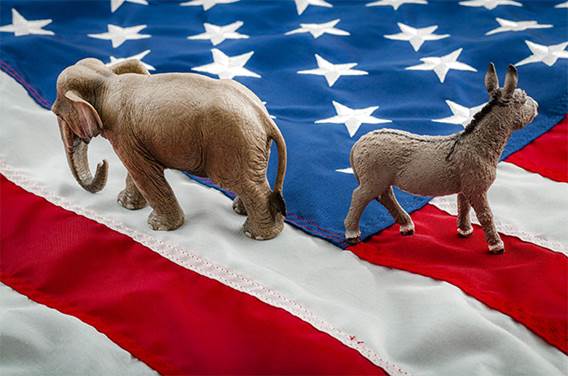
And if you’re a Democrat, you should be pro-labor, pro-tax and spend, particularly to help the poor, and support multilateralism when conducting America’s business abroad. These divisions are even more stark when it comes election time. We are constantly bombarded with predictions on who’s going to win “red states” or “blue states”.
The same dynamic goes on in midterms and state-level elections. The mentality of “my daddy voted Democrat and his daddy did too so there’s no way I’m gonna vote for them Republicans!” is a brand loyalty Canadians find strange.
But it wasn’t always this way.
Back when George Washington was president, there were no parties. In fact he disliked the idea of having parties so much, that in his farewell address, President Washington spoke against them: “The common and continual mischiefs of the spirit of party serves always to distract the public councils and enfeeble the public administration.”
The emergence of the Democrats and Republicans goes back to the American revolution. Alexander Hamilton, a founding father and leader of the Federalists, disagreed with Thomas Jefferson, leader of the Democratic Republicans, over the nature of government, foreign policy and the economy.
Hamilton thought the US should follow the British model in order to be successful, meaning a strong central government, a national army, a central treasury and a political executive representing the states. The Federalists also wanted the central government to have taxing powers, form a national bank and print paper money that would be legal tender across all the states. This partly stemmed from Hamilton’s trouble controlling the treasury while serving as vice president under Washington. The Articles of Confederacy held that the government could request money from states but had no taxing authority. This made it difficult for the country to pay its loans or raise an army.

Jefferson, the southern plantation owner, believed a national treasury and army would endow the central government with too much power. Also, he didn’t trust them having control over the treasury. And why adopt the British system when the US had just won freedom from the red coats in the American Revolution? Jefferson preferred political power to reside with individual states and their legislatures. He especially disliked the idea of reducing states’ rights and passing policies that favored the financial sector based in the north, versus agriculture mostly in the south.
This battle of ideas was eventually won around 1800 by the Democratic Republicans when they beat John Adams and the Federalists to the presidency. The Federalist Party disappeared but was re-born in 1856 as the Republican Party, whose mandate was to stop the flood of pro-slavery settlers from crossing the 36-degree parallel that divided the industrial north from the agrarian south.
Since then only the Republican (aka the “Grand Old Party” GOP) and Democratic Parties have ruled the United States. There are of course dozens of small parties that could theoretically become a factor if one of them received 5% of the vote, qualifying them for elections funds, but the likelihood of a third party ever having the financial clout to put up a candidate for president, or run candidates in federal or state elections, is so unlikely that the current system, without change, is destined to be limited to two parties.
As for how democratic the two-party system is, that is a complicated matter, but Vox presented a good analysis recently. Here are some of the salient points:
- When Trump was elected in 2016, he actually had less of popular votes than Hillary Clinton. In fact, Trump was less popular than the far-right Alternative for Germany Party, which got 10% of that country’s eligible voters, compared to 6% (14 million) of the 230 million eligible American voters who chose Trump in the Republican primaries. Stated another way, only 6% of Americans supported his bid for the presidency.
- A US political party only needs a quarter of the population’s votes to get control of the Congress. American turnout in both presidential and mid-term elections is low, around 50% and 40% respectively.
- Back in the 1950s, Republicans and Democrats were so close ideologically, that voters didn’t have a clear choice of who to vote for. Compare that situation to now, when the two parties are deeply polarized.
- This results in clearer divisions between policies, that the voting public can understand, but the problem is in the execution of policies. Because the US system is designed around checks and balances that prevent the “tyranny of the majority”, we have gridlock. Few policies, and sometimes none at all, if the government shuts down, get passed.
- This then leads to frustration and dysfunctional government, and an obsession with “fixing the system”, a sentiment that Trump was able to exploit to win the presidency in 2016.
Gridlock
Trump campaigned on a promise to treat politics like a business, and get things done. Three years in, we see the same stalemate between the executive (the president and White House) and legislative (Congress) branches.
The latest government shut-down, spawned by a disagreement between Trump and Congress over border wall funding, was the longest in US history. Obama’s lasted only two weeks but was just as disruptive, if not more divisive, since it involved two issues not one: raising the debt ceiling and a dispute over funding Obamacare.
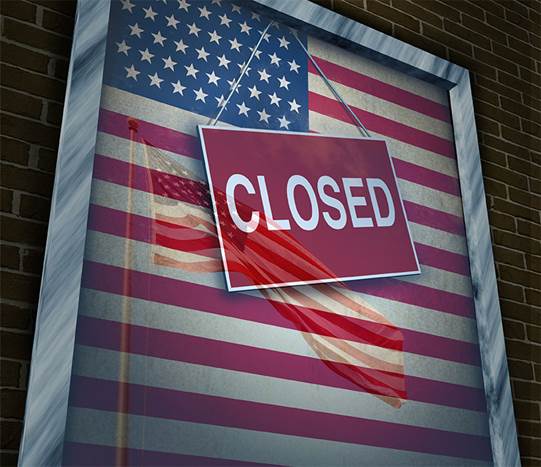
The Daily Beast reports that “political gridlock is killing us, literally”. The news aggregator carried an op-ed noting that even after 59 people were gunned down in Las Vegas, the government failed to pass gun-control legislation – despite both parties agreeing they should ban “bump stocks” used on one of the Vegas killer’s rifles. When Australia witnessed a shooting massacre in 1996, it banned assault rifles. New Zealand passed gun-law reform less than a month after 50 people were shot and killed in two Christchurch mosques.
One could make a similar argument about people dying or not getting proper care as a result of the failure by US legislators to either repeal or bolster Obamacare.
The New York Times quotes two Senators saying the institution is basically broken:
“The Senate has literally forgotten how to function. We’re like a high school football team that hasn’t won a game in five years. We’ve forgotten how to win.” – Senator Angus King, Independent of Maine
“Congress is weaker than it has been in decades, the Senate isn’t tackling our great national problems, and this has little to do with who sits in the Oval Office. Both parties — Republicans and Democrats — are obsessed with political survival and incumbency.” – Senator Ben Sasse, Republican of Nebraska
Partisanship runs deep
We shouldn’t be surprised at the gridlock, though, considering that political partisanship is a cultural thread running through America. In 2017 Pew Research conducted a survey of Americans’ values related to the role of government, the environment, race, immigration, religion, etc. The poll takeaways make for some interesting reading. One example: Trump’s approval ratings were the most partisan of any first-year president, going back to 1953. Eight-eight percent of Republican respondents judged Trump’s job performance favorably versus just 8% of Democrats. According to Pew Research:
What is striking is how little common ground there is among partisans today. Even on issues on which Republicans and Democrats have moved in the same direction – for example, growing numbers in both parties say homosexuality should be accepted rather than discouraged – the partisan differences are wider today than in the past.
How about Americans who declare themselves to be non-partisan? Another poll done by Gallup, in 2018, found that most Americans when asked identified themselves as “independents” ie. neither Democrat nor Republican. In fact the number of self-described independents was 42% versus 30% in 2014.
But when asked whether they lean one way or the other, 75% said they do. Only 10% are truly independent, adhering to neither Republicans nor Democrats, meaning that a representative 90% of the population is partisan, The Conversation reports.
The real disaster in all of this for the US is the fact that partisanship is preventing legislators from working together to solve important issues. Very recent Pew Research findings on partisanship are discouraging, as far as finding any kind of national compromise. The research firm found 88% of respondents are worried about current political leaders’ ability to solve any of these challenges such as immigration and budget deficits. This month the Treasury Department reported a deficit of $234 billion, the largest monthly gap between revenues and expenses in US history.

Economics is the perfect example of how partisanship is leading US politics down two totally different paths. The road being followed by Republicans is a return to the gold standard, where fiscal discipline is enforced by linking the US dollar to the price of gold. President Nixon abandoned the gold standard in 1971, after which the dollar soon became the world’s reserve currency when Saudi Arabia and other OPEC nations agreed to trade barrels of oil exclusively for dollars.
In contrast, the Democrats are taking a serious look at a new economic formula called Modern Monetary Theory (MMT). This completely flawed economic vision would permit a massive expansion of spending and money-printing, causing a crushing hyperinflation that would sink the dollar and put America on a speedway to financial ruin. For more on this, read our MMT is a spectacularly Dem idea
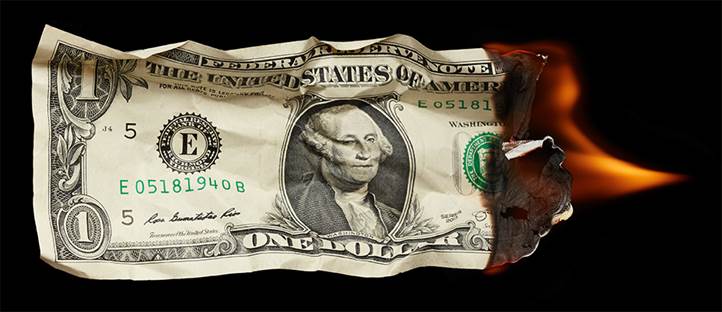
Outside of Washington though, it’s just as bad, if not worse. USA Today ran a column citing a recent paper by political scientists, that found over 40% of people in both parties consider those in the opposing party to be “downright evil,” with about one in five from both parties feeling political opponents “lack the traits to be considered fully human — they behave like animals.”
Fascism creep
Even more disturbing than the hyper-partisanship in the US right now, going as far as characterizing those with opposing views as “inhuman”, is the slow drift to the right of the political spectrum. You may disagree with the characterization of Trump as “a fascist”, but fascism is not what most people think it is – and we may be closer than we’d like to believe.
I’ve written on this before. For a deep dive, read our Stormtroopin’ USA
No term generates more confusion or misunderstanding than fascism, too many people believe that fascism exists solely in images on the History Channel – storm troopers pounding thundering jackboots down cobblestone streets of occupied countries while throwing the Roman salute. But fascism is not defined by clothing, symbolism or salutes.
Fascism is a totalitarian system of government that bases its economy on capitalism, it’s a marriage of government authority and military/police power managed by corporate influence.
“The liberty of a democracy is not safe if the people tolerate the growth of private power to a point where it comes stronger than their democratic state itself. That, in its essence, is fascism – ownership of government by an individual, by a group.” Franklin D. Roosevelt
For a real eye-opener, scroll down the list below and ask yourself, how many boxes does the Trump Administration, and the Obama Administration tick? Quite a few I would submit.
Consider the following, all are characteristics of fascism:
- A dictatorial ruling cabal runs the country
- The military is increasingly being used to control the civilian population
- The government repeatedly violates the US Constitution
- Government informants are spying on their fellow citizens
- Controlled mass media
- Fraudulent elections
- Powerful and continuing nationalism, calls for national unity
- Militaristic values are spreading in society and the power of the military is increasing, glorification of war
- Obsession with national security
- Disdain for the recognition of human rights, racism
- Radical opposition to communism/socialism, modernism and attacks on liberals
- Identification of enemies as a unifying cause
- Corporate power is protected while labors power is suppressed – Fascism and capitalism are inseparable because the corporate power structure is authoritarian, and is geared to reward the elite owners, but not the workers. Few would argue against the fact that corporations control our government and have the dominant role in our society
- Obsession with crime and punishment
- Militarization of the police – Since the terrorist attacks in 2011 the US has spent $635 billion to militarize its police forces
- A trend toward corporatism and systematic destruction of the middle class
- Rampant cronyism and corruption
- Intertwining of government and religion
- A cult-like leader
Also – Fake news, the media is the real enemy, coercing bureaucrats to break the law while dangling presidential pardons.
“Fascism in America won’t come with jackboots, book burnings, mass rallies, and fevered harangues, nor will it come with black helicopters or tanks on the street. It won’t come like a storm but as a break in the weather, that sudden change of season you might feel when the wind shifts on an October evening: Everything is the same, but everything has changed. Something has gone, departed from the world, and a new reality will have taken its place.
All the old forms will still be there: legislatures, elections, campaigns plenty of bread and circuses. But consent of the governed will no longer apply; actual control of the state will have passed to a small and privileged group who rule for the benefit of their wealthy peers and corporate patrons.” – Chris Floyd, November 10, 2001 Moscow Times

Isolationist America
A strong leader is a key attribute of fascism. One that believes in building up a military in preparation for war. Diplomacy is considered weak. Better to deal with leaders of nations one on one. Is this not an apt description of Trump? Consider his bellicose language over North Korea, calling its leader “rocket man”. The refusal to shake Angela Merkel’s hand during a visit to the White House in 2017. The insistence that he alone can solve the North Korean nuclear weapons testing dilemma, by meeting Kim in Vietnam. Ripping up trade deals like the TPP and NAFTA, imposing tariffs on your so-called friends, scrapping the Iran nuclear deal, the list goes on.
The latest is Trump’s insistence that America’s allies pay the full cost of hosting US troops, plus 50% for “the privilege of hosting them”. “Wealthy, wealthy countries that we’re protecting are all under notice,” Trump said in a speech at the Pentagon on Jan. 17. “We cannot be the fools for others.”
Fair enough, but the formula would have some countries paying five to six times more than they do now. It’s all in aid of having US military partners shoulder more of the burden of defense spending, which is the second-highest line item in the US budget behind Social Security. Trump has been pressing the issue for years. But Europe is pushing back.
German Chancellor Merkel in November stood up in the European Parliament to proclaim the benefits of forming a European Army. While this is nothing new (the idea was first floated in the 1950s), it’s the first time since Charles de Gaulle and his “force de frappe” that a European leader has had the fortitude to stand up to an American president regarding continental defense. “It would be so much easier to work with us? When at present we have over 160 defense systems, weapons systems, and the United States of America only 50 or 60 when we need self-administration, mentoring, training, we cannot be efficient partners,” said Merkel, emphasizing that her idea of a European Army would add to NATO not substitute for it.
Still, even bringing it up must have seemed a snub to the ultra-sensitive-to-criticism US president. Later Merkel said Europe could no longer “rely on the superpower of the United States.” Ouch.
There’s strong and there’s unreasonable. America’s allies clearly believe Trump is more the latter. In international affairs, putting America first comes at a price.
Consider this: according to a February op-ed in the Miami Herald, polls are showing that citizens from countries angered by the Trump Administration, including Germany and France, trust China’s President Xi Jinping and Russian President Vladimir Putin more than the US president.
“By any other measure, the president’s aggressive pursuit of nativist policies has weakened America’s global leverage, given its adversaries strategic openings and made the world a little less safe for democracy and human rights,” states the op-ed.
Stronger words came from a senior German official at an annual security conference in Munich in February. “No one any longer believes that Trump cares about the views or interests of the allies. It’s broken,” the official told the New York Times.
The fallout is these countries turning to America’s enemies for trade and protection. One example: 13 countries have reportedly expressed interest in buying the Russian S-400 surface-to-air missile system, an alternative to the US-made Patriot and THAAD platforms. They include India, Turkey, Egypt, Vietnam, Iraq and Saudi Arabia.
Another is Italy’s MOU with China to join its Belt and Road Initiative – a network of ports, bridges and power plants. Beijing has pledged to buy about $2 trillion worth of goods from participating countries. Italy is the first Group of Seven country to join BRI, after Portugal signed on in December.
Entitlement warning
As America’s leader-of-the-free-world status gets tarnished after so many diplomatic skirmishes with allies over the past three years, the fast-running economy at home is slowing to a walk.
The US Federal Reserve has indicated no more rate hikes this year. The inverting yield curve is flashing “R” for recession, an environment that gold tends to do well in. Even if there’s no recession, and we hope there isn’t, lower rates will weigh the dollar down, pushing commodities up, including precious metals.
Former US Federal Reserve chair Alan Greenspan on Friday told CNBC he thinks that economic growth will be crushed from the burden of entitlement programs, plus weak global growth.
“I think the real problem is over the long run, we’ve got this significant continued drain coming from entitlements, which are basically draining capital investment dollar for dollar,” he told CNBC’s Sara Eisen during a “Squawk on the Street ” interview.
He expects the economy to do well short-term but over the long-term growth “fades very dramatically,” CNBC reported Greenspan, who headed the Fed for 19 years, saying.
Conclusion: Hold gold
What is an investor to do with knowledge of these rather depressing observations? To sum up:
- America’s two-party system has led to gridlock with no end in sight.
- The US political culture has never been more polarized. There is low appetite for compromise and little hope of reaching common ground.
- As positions harden, the US is turning further to the right. The suggestion of a fascist state may be a bit alarmist, but on the other hand, the Trump Administration ticks a lot of the boxes.
- Trump has ruined a good many international relationships that took years to cultivate. In politics, that always comes at a price. The price of the spurned allies? Accommodation with America’s enemies.
- The US can’t count on a lot more sunny weather in terms of the domestic economy. Storm clouds are gathering on the horizon, and this will likely make the Trump Administration turn further inward – digging its heels in on tariffs and picking fights with countries that threaten key industries and voting blocks heading into the 2020 election.
There is much uncertainty in the world and the United States under Trump is actually weaker than it was before he came on the scene: A growing trade deficit, a record budget deficit in April, an inverted yield curve, a scary stock market pullback last fall, Chinese growth faltering, thereby affecting US growth, and rising oil prices hitting just about every sector of the economy. The Fed is so concerned, there will be no more interest rate increases this year, and possibly even an interest rate cut.
On top of all this, you have frayed alliances, an arms race developing between the US, China and Russia, naval confrontations in the South China Sea, ongoing conflicts in the Middle East, North Korea, etc.
It’s enough to knock the US off its pedestal and question the “exorbitant privilege” the US dollar had enjoyed since the end of the Second World War. The US dollar is becoming less important and gold has been given a boost by the international banking system. In 2018 central banks bought nearly twice as much gold as in 2017.

Now, more than ever, is the time to invest in gold and gold companies.
Richard (Rick) Mills
Ahead of the Herd Twitter
Ahead of the Herd FaceBook
Legal Notice / Disclaimer
This document is not and should not be construed as an offer to sell or the solicitation of an offer to purchase or subscribe for any investment. Richard Mills has based this document on information obtained from sources he believes to be reliable but which has not been independently verified. Richard Mills makes no guarantee, representation or warranty and accepts no responsibility or liability as
to its accuracy or completeness. Expressions of opinion are those of Richard Mills only and are subject to change without notice. Richard Mills assumes no warranty, liability or guarantee for the current relevance, correctness or completeness of any information provided within this Report and will not be held liable for the consequence of reliance upon any opinion or statement contained herein or any omission. Furthermore, I, Richard Mills, assume no liability for any direct or indirect loss or damage or, in particular, for lost profit, which you may incur as a result of the use and existence of the information provided within this Report.
Legal Notice / Disclaimer
Ahead of the Herd newsletter, aheadoftheherd.com, hereafter known as AOTH.Please read the entire Disclaimer carefully before you use this website or read the newsletter. If you do not agree to all the AOTH/Richard Mills Disclaimer, do not access/read this website/newsletter/article, or any of its pages. By reading/using this AOTH/Richard Mills website/newsletter/article, and whether you actually read this Disclaimer, you are deemed to have accepted it.






